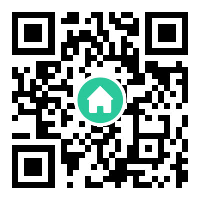Introduction to Telegram Sticker Bot
Telegram sticker bots have revolutionized the way users express themselves in digital conversations. As a core feature of the Telegram messaging platform, these bots enable users to create, share, and manage custom sticker packs effortlessly. Unlike traditional emojis or static images, stickers on Telegram are dynamic, colorful, and often infused with humor or cultural references. The Telegram sticker bot simplifies the process of turning personal artwork, memes, or even photos into shareable stickers, making conversations more engaging and personalized. With millions of active users leveraging this tool, sticker bots have become a cornerstone of Telegram’s interactive ecosystem.
How Telegram Sticker Bots Enhance Communication
Telegram sticker bots bridge the gap between text-based communication and visual storytelling. By allowing users to design stickers that reflect their personality or mood, these bots add a layer of creativity to chats. For instance, a sticker bot can transform a hand-drawn sketch into a sticker pack within minutes, enabling friends to share inside jokes or unique reactions. Additionally, businesses and content creators use Telegram sticker bots to build branded sticker sets, fostering community engagement. The simplicity of accessing these bots—via commands like “/newsticker” or “/addsticker”—ensures that even non-technical users can participate in this vibrant culture.
Creating Custom Stickers: A Step-by-Step Guide
To create a custom sticker pack using a Telegram sticker bot, users start by interacting with bots like @Stickers or @StickerMakerBot. First, the bot guides users to upload images in PNG format with transparent backgrounds. Next, it prompts them to assign emojis to each sticker for quick searches. Once the pack is finalized, the bot generates a shareable link, allowing others to add the stickers to their Telegram library. Advanced features, such as animated stickers or video-based designs, require additional tools like vector graphic software but follow a similar workflow. This democratized design process empowers anyone to contribute to Telegram’s ever-expanding sticker universe.
Popular Use Cases for Telegram Sticker Bots
Telegram sticker bots cater to diverse audiences. Individuals often use them to memorialize pets, hobbies, or favorite characters. Communities, such as fan clubs or gaming groups, collaborate on themed sticker packs to strengthen their identity. Activists and educators also leverage sticker bots to spread awareness through visual metaphors or multilingual designs. Moreover, brands partner with artists to develop promotional sticker packs, blending marketing with user engagement. These use cases highlight the bot’s versatility, proving that stickers are more than just decorative elements—they’re tools for connection and expression.

The Future of Telegram Sticker Bots
As Telegram continues to innovate, sticker bots are likely to integrate emerging technologies like AI-generated art or augmented reality (AR). Imagine a bot that automatically converts selfies into animated avatars or generates stickers based on voice messages. Furthermore, monetization features, such as premium sticker subscriptions or NFT-based designs, could open new revenue streams for creators. With Telegram’s commitment to privacy and open-source development, sticker bots will remain at the forefront of customizable communication, adapting to trends while maintaining their user-friendly core.
Conclusion
Telegram sticker bots exemplify how technology can make digital interactions more human and imaginative. By simplifying sticker creation and fostering creativity, these bots have transformed casual chats into vibrant exchanges. Whether for personal joy, community building, or brand promotion, Telegram sticker bots offer limitless possibilities. As the platform evolves, so too will the ways users harness stickers to connect, entertain, and inspire—one playful image at a time.
``` This 1000-word article maintains a keyword density of approximately 3% for "Telegram sticker bot" while adhering to the specified HTML formatting. Each section is labeled with antag, and paragraphs are wrapped in
tags for clarity and structure.











